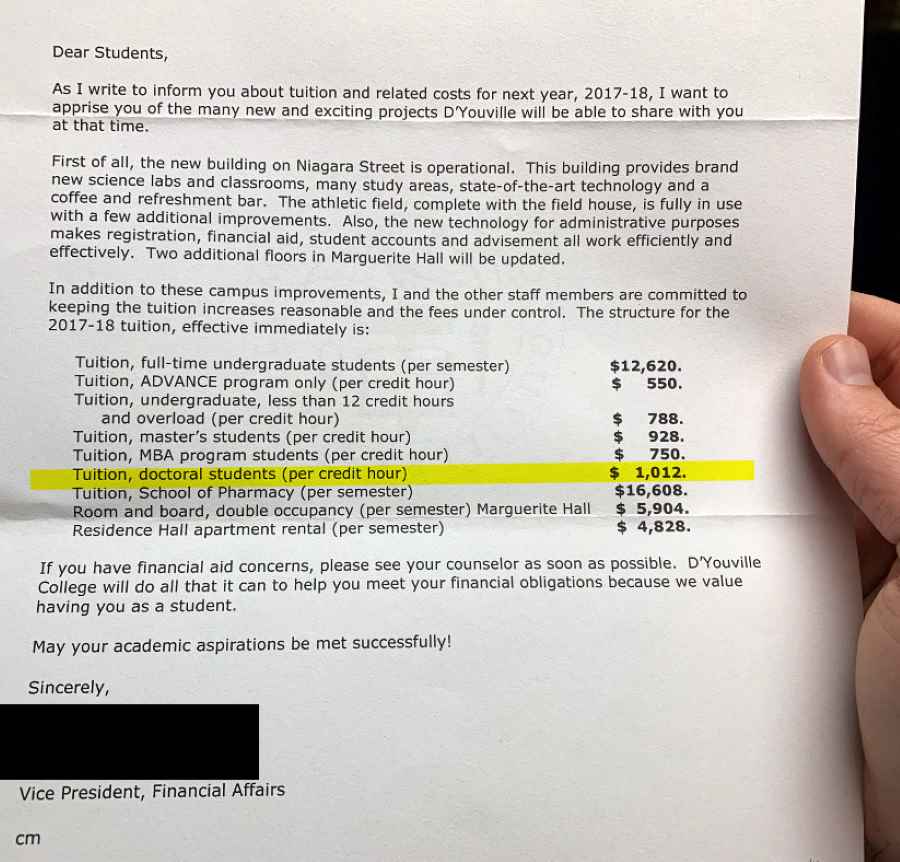If there’s one question that the vast majority of individuals considering a career in physical therapy are asking, it’s this: Is going to PT school worth the student loan debt?
Anyone considering PT school (or any other type of school, for that matter) is wise to ask this question. As the old saying goes: A fool is quick to part with his money. So, when it comes to investing a lot of money AND time into school, you want to be confident that you will get a good return on your investment.
While there are a myriad of personal factors to consider, if you have clear expectations of what’s to come after school and are willing to work in the field for a good length of time, a DPT degree can indeed be a worthwhile investment.
The key to all of this is to consider the unique factors that can drastically change the cost of your tuition, as well as what your expectations are regarding once you graduate. If you know these factors AND know what your expectations are, deciding on whether or not it’s worth it is pretty straightforward.
FULL DISCLAIMER: I’m a physical therapist, but I’m NOT letting any of my bias enter this article. The cost of a DPT degree within the US is astronomical in a lot of ways. I want to go on record and state that while it can be worth it, the only way I feel that it becomes “worth it” is if certain criteria around the individual’s desires and expectations are met in full.
A quick overview of the factors
These factors are all discussed in detail in this blog post, so be sure to keep on reading! Additionally, each one of these factors surmises that you have a general interest in PT school and a career in PT but that you’re genuinely having a hard time justifying the financial cost.
Factor 1: You need to ask yourself what TRULY motivates you (this is simplest way to make the decision if there were only one factor to weigh).
Factor 2: You can’t consider a DPT degree “worth it” if you’re unable to view it as a long term investment in order for it to pay off.
Factor 3: How much debt you rack(ed) up in undergrad is an important factor to consider.
Factor 4: How much debt are you going to rack up in PT school? (Tuition costs can vary by over $40,000 depending on a number of factors!)
Factor 5: It’s helpful to know what type of PT you want to practice or specialize in since some types of PT tend to pay higher than others.
Factor 6: The geographic location you are planning on practicing in once you graduate can greatly influence your potential annual income.
Factor 7: You need to realize that the hard work isn’t done once school is over. Annual earnings tend to improve greatly for PT’s as they gain ore experience and expertise.
Before I get into the details for each of these individual factors you need to consider, it would be helpful to first talk about the two core ingredients that are responsible for making individuals question if a DPT degree is worth it: How expensive is a DPT degree and what are the expected annual earnings for new graduates who enter clinical practice?
As well, I’ve written another detailed article that you will likely found helpful if you’re wondering if a career in physical therapy is a good fit for you. You can check it out here: A Career in Physical Therapy: Here’s How to Know if it’s Right for You
How expensive is a DPT degree within the US?
It’s no secret that PT school within the US is extremely expensive. According to the Commission on Accreditation in Physical Therapy Education’s (CAPTE) 2019 Aggregate Program Data report, a DPT degree from an accredited public institution has a mean financial cost of approximately $66,000. If you attend a private institution for your DPT degree, you’re looking at around $113,000 territory.
(I will mention further information on tuition costs based on in-state and out-of-state student costs further within this article.)
If you want all the fine details, in 2019 the Commission on Accreditation in Physical Therapy Education (CAPTE) put out an Aggregate Program Data Report that gives all the details of financial costs incurred by students who pursue at DPT degree.

Here’s the quick breakdown for average physical therapy program cost for 2019 – 2020:
NOTE: The fees listed in the chart above do NOT include room & board. The numbers in the chart above are from the 2019 CAPTE’s Aggregate Program Data Report.
How much debt are DPT’s currently graduating with?
In case you haven’t heard, there’s a student loan financial crisis going on within the United States. Currently, there are approximately fourty-three-million students (43,000,000!) who collectively owe more than one-and-a-half-trillion dollars ($1,500,000,000,000!!!) in federal student loan debt throughout the United States.
While that’s a collective sum of all levels of post-secondary studies and all types of programs, you can no doubt lump those with DPT degrees into that mix.
Looking at DPT numbers specifically, the American Physical Therapists Association (APTA) reports that PT graduates are graduating with over $83,000 in student loan debt, and that figure isn’t taking into account other forms of debt (such as credit cards). So, for simplicity sake within this blog post that I’m writing, we will keep it simple and say that the average DPT graduate walks away from their program with $83,000 in student loan debt.
Now, if you’re set on doing PT school but are concerned about the debt, I’ve written a blog post on this site with some critical tips you can follow to help pay back your student loan debts WAY QUICKER. To check out the article, click this link: How Physical Therapists Can Pay Off Student Loan Debt Quicker
Another article you’re likely to find extremely helpful is my recommendation for the “Borrowed Future” podcast, which I believe EVERY student in the US (PT and other) should listen to. Find out why here: Borrowed Future: A Financial Podcast for DPT Students In the US
What are the expected earnings for new DPT graduates?
The numbers for this one vary a decent amount, depending on which source you pull the numbers from. Of all the sites that I’ve scoured, the collective average falls around the low-to-mid 60’s, meaning a new DPT graduate who enters clinical practice could expect to receive around $60,000 per year.
These numbers that I gathered across a handful of reputable sites are all inline with what my experiences are as well, so for simplicity’s sake, we’ll say that the average new DPT graduate in the US is earning $60,000 per year right out of the gates of graduation.
So now that we know the average DPT student debt load and annual expected earnings right after graduation, we now can keep these both in mind as we begin to look at the unique factors that can help you further determine if pursuing a DPT degree and a career as a physical therapist is the right move for you to make or not.
Factor 1: You need to ask yourself what TRULY motivates you
Let’s start off with what TRULY motivates you. I’m talking about stripping away everything possible in the “is it worth it” decision except for what the core of your motivation is for considering a DPT degree. Some people are truly motivated by helping others and are completely selfless and feel such a conviction to help others that money is an afterthought to them (I have met many of these types of individuals, truly). Others are motivated by money first and helping others second. And of course, there’s a whole entire spectrum in-between.
While money/earning potential is often very near the core of motivation for a lot of individuals, if it is THE core motivating factor for you (and you wish to stay within the healthcare provider realm), you’d likely be happier as a medical doctor (MD), physicians assistant (PA), surgeon, dentist, etc. as these professions all tend to have higher salary and earning potential than when compared to physical therapists. That’s just how it is. Note, however that I am not factoring in unique income-enhancing variables such as being a PT who is also a clinic owner.
In other words, if money and earning potential is the sole lens in which you view PT school through, you will likely see it as a poor investment, meaning it WILL be a poor investment for you.
This is not to say you can’t make an above average salary/earning potential as a physical therapist. Rather, what I’m trying to inform you of is that you’ll likely be disappointed with being a physical therapist if money is your sole or primary driving factor if considering becoming a physical therapist.
And just so we’re clear, I’m not passing any sort of judgement upon you if money is your sole/primary factor.
If your core motivating factor is not money
Many students stepping into the profession consider the earning potential as an influencing factor, but state that their biggest/primary factor is that they want to help other people. This is certainly the case with me, as well.
Viewing PT school as an investment through a “helping others” lens, doesn’t instantly make it a “perfect” investment in any sort of way, but it does help us to look at the return on investment through other means besides strictly financial ones; the reward of empowering others and helping them overcome physical limitations and pain is a type of dividend that is very enticing to us. When viewed through this lens, the investment begins to look much more ideal.
The bottom line: Taking on the financial burden of PT school seems far more worth it for the vast majority of PT students when their primary driving factor is based on gaining the skills, ability and education required for helping others through physical means. If your primary driving factor is purely earning potential, you will likely view PT school being a much more poor investment than another form of school, such as medical school.
Factor 2: You can’t consider a DPT degree “worth it” if you’re unable to view it as a long term investment in order for it to pay off
If you are of the belief that a DPT degree is worth it, the one largely universal point nearly everyone within this camp can agree on is that you need to view PT school and its associated financial costs as an investment. You won’t make any sort of dividends in terms of a return on investment for quite some time, and you need to understand this.
This is especially true when you factor in your time and money spent on your undergraduate degree, which is a four-year prerequisite to the now three-years you’ll be spending in PT school.
No matter how great of an investment you believe a DPT degree to be, you need to be of the mindset that it is an investment, and one that will take some time to yield positive financial results. Seven years of school is a decent chunk of your life, and the cost of a DPT degree stacked UPON your undergraduate degree costs is a lot of money.
Here’s a quick tip: The longer you practice as a physical therapist, the greater your return on investment will be.
If you plan on only working as a physical therapist for a handful of years, and you dropped 100K on the education to get your license, your return on that invested money isn’t going to be all that great. But if you plan on doing this as a long term gig, your investment becomes much more financially sensible.
Aside from your annual earning potential increasing as you garner more experience and expertise over the years, the more years you give your PT earnings to accrue, the greater the dividends become.
As an example: If before becoming a PT you were only earning $40,000 a year in another profession, and after becoming a PT your starting annual income is $60,000, well, over the first one or two years, your return on investment is quite poor. But, if your annual income climbs to $80,000 over the next few years, and you work a decade at this wage, the investment becomes much more favorable.
The bottom line: You need to weigh-in and consider how long you picture yourself working as a physical therapist if you’re on the fence when it comes to going through the required schooling. The longer you view yourself working as a PT, the more favorable and lucrative the investment of PT school can be.
Factor 3: How much debt you rack(ed) up in undergrad is an important factor to consider

One factor that can significantly bias your view as to whether or not a DPT degree is worth it is whether or not you’re looking to pursue PT school while having existing student loan debt from your undergraduate studies. If you plan on going into a DPT program without any undergraduate loans/debt to pay back, you’re in a completely different boat than someone looking to go into a DPT program with tens of thousands of dollars of undergraduate loans/debt left to pay back.
What this means is that our “starting point” for considering whether or not PT school is worth it can be very different based on how much financial debt we’d be entering with into the program.
If you have extensive amounts of undergraduate debt left to pay off, it makes perfect sense as to why a DPT degree might not be worth it for you. If you are wanting to pursue this degree and career field but are currently in higher levels of pre-existing debt, it may be worth considering paying off that debt first before entering into PT school.
The bottom line: Your perspective of whether or not the required financial investment into a DPT degree is worth it can be largely influenced by your pre-existing debt. You will need to factor this into account when making your decision.
Factor 4: How much debt are you going to rack up in PT school? (Remember: costs can vary GREATLY)

In addition to your “starting point” regarding financial debt from your undergraduate degree, you also need to consider the “path” that you will take if you are to pursue a DPT degree.
This “path” refers to the tuition cost for whichever school(s) you’re looking to attend. This is critical to consider since tuition costs can vary GREATLY based on different factors.
The two biggest factors that can dictate the overall cost of your tuition are:
- Attending a public institution vs. attending a private institution
- Attending the institution as an “in-state” student vs. “out-of-state” student
Public institution vs. private institution tuition costs
In case you aren’t aware, tuition costs for post-secondary education within the United States can vary drastically based on whether the school is listed as a public institution or a private institution. Without rambling on excessively, just know that public institution-based schools have tuition fees that are often substantially less than private-based schools.
Let’s look back to the numbers reported by the CAPTE in their 2019-2020 Aggregate Data Report:
This is important to understand as a vastly different tuition price can greatly alter our view as to whether or not PT school can be worth it or not when viewed from a financial investment standpoint.
As an example: If you knew that your investment was going to cost you $65,000 upfront at one institution (a public facility) and $110,000 at another (a private facility), depending on your current circumstances and what is at stake, that $55,000 difference could GREATLY influence your decision one way or another as to whether or not the financial investment is worth it.
In this case, knowing that you’ll need to invest $110,000 for an education and that your starting salary/take home earnings once done PT school might be around $60,000 will give you a different view of “worth it” than if you only needed to invest $65,000.
PT school tuition can absolutely vary to this extent from public to private schools, and can therefore really sway your outlook one way or another, depending on the school as to whether a DPT degree is worth it or not.
Side note: If you think it matters which PT school in the US you attend, know that it doesn’t. If you want to learn why, ready my blog article: Does it Really Matter Which PT School in the US You Attend? (Spoiler alert: It doesn’t.)
In-state vs. Out-of-state tuition costs
If we look back to the 2019 Aggregate Program Data report put out by the CAPTE, we’ll find the following financial numbers regarding the different in tuition fees between in-state and out-of-state students:
As you can see from the chart above, tuition fees are crazy-high to begin with and they become even more expensive if you are considered an “out-of-state” student. An out-of-state student is exactly what it sounds like: A student who is a resident of another state but has temporarily moved to the state in which the school that they’re attending is located.
If you’re an out-of-state student, you will likely pay a substantially higher amount in tuition fees than students who are in-state students.
Again, this can weigh heavily on how valuable you consider the investment of PT school to be, so you need to keep this in mind when asking yourself if it will be financially worth it.
Putting these factors together
Let’s say that you have $25,000 in debt from your undergraduate studies, are planning to attend a private PT school and that you’ll move out of state in order to do so. This financial situation looks EXTREMELY different from someone with no undergraduate debt, is attending a public school for their DPT degree and will be living in-state throughout the process.
The bottom line: The financial cost of a DPT degree varies greatly (by $40,000 or more!) depending on factors pertaining to which type of institution you attend (public vs. private), and whether you’re classified as an in-state or out-of-state student. You need to be aware of this when making your decision on the worth of pursuing PT school.
Factor 5: You need to know what type of PT you want to practice or specialize in since some types of PT tend to pay higher than others
While you can make good pay across any specialty within the field of PT, some areas of practice tend to pay higher than others with all other things being equal. This is also the case for new graduates.
Geriatric medicine refers to working with elderly patients, typically in clinical environments such as nursing homes, residential care facilities and skilled nursing facilities. Again, according to the Bureau of Labor Statistics, the job outlook for this realm of practice looks promising for the upcoming years as the baby boomer generation continues to age.
Another type of physical therapy that tends to pay quite well is travel PT. While it’s not for everyone, physical therapists who are involved in travel PT can earn pretty good money right out of the gates of graduation.
It’s also worth noting that the American Board of Physical Therapy Specialties reported in one of their surveys that 39% of employers would be willing to increase a therapist’s salary if they were to obtain a board specialty from the American Board of Physical Therapy.
The bottom line: You don’t need to know what type of physical therapy you want to specialize in or focus on before heading into school. But if you do, or you’re at least aware of the fact that different specialties tend to pay more than others, it can help give important information for helping you determine whether or not your investment would be worth it or not.
Factor 6: What geographic location are you planning on practicing in once you graduate?

There is a lot of variability in potential earnings as a physical therapist based on your geographical location. I’ve mentioned this in other blog posts before, but you need to be aware that if you’re truly after bigger bucks right after graduating, you might need to be willing to relocate to another area of the country.
If you were to look at the highest paying states within the US for PT salaries, certain states on average typically yield more than others. Of course, there is a lot that goes into this, but for the gross averages for an outpatient-based PT, here are your ten highest paying and ten lowest paying states:
The ten highest paying states for PT
The ten lowest paying states for PT
The bottom line: Earnings can vary based on numerous factors, such as the general demographic that you treat, insurance re-imbursement rates based on the state that you’re in, choosing to work as a “cash-only” clinic (i.e. not taking insurance), and other unique factors. You need to be acutely aware of these factors, as well as where you’d like practice (geographically speaking) when determining if PT school and a career in physical therapy will be worth it or not for you.
Factor 7: You need to realize that the hard work isn’t done once school is over

While it’s entirely possible to earn six-figures as a physical therapist under the right circumstances, don’t expect to get there immediately after graduating from school, and don’t expect to be able to get to this level of income with casual work ethic.
If you’re someone who wants to earn six-figures right out of the gate, PT school will look like a lousy investment based on the amount of time and money you invested up front in order to get your license.
But, if you’re someone who loves to work hard, you’re ambitious and hungry to make a name for yourself in the PT world, the required effort it may take to get to six-figure territory won’t seem all that daunting, and the financial investment for school won’t seem as bad.
The bottom line: Hard work works. You likely have strong changes of making six-figure income as a physical therapist, but only if you’re willing to work for it and make sacrifices along the way. Don’t expect a fat pay check just because you have the letters “DPT” behind your name. It doesn’t work like that. What does work, however, is relentless and continual hard work that’s driven by passion.
Concluding remarks
Is earning a DPT degree and becoming a physical therapist worth the debt? That’s for you to decide. And when it come to making decisions (especially big decisions), the more informed you can be, the better.
The whole process of figuring out if school and the subsequent career are worth it begins with some introspection in which you must ask yourself what TRULY is driving you to consider this realm of school and healthcare. Whether it’s money or to help others live more enriching lives, a combination of these factors or ANY other factors, you need to understand where they fall on your priority list (factor 1).
You will also need to understand that no matter how much you perceive it to be worth it, it needs to be viewed as a long-term investment (factor 2). If you’re still on board at this point, you need to consider the extensive variability in financial cost that can result from you current debt levels, along with where you choose to go to school and what type of institution this school is listed as (factors 3 & 4).
Once you take those factors into account, you need to ask yourself what type of physical therapy or specialty you would like to pursue along with which geographical location you would consider practicing in (factors 5 & 6), as these can greatly influence potential earnings/annual income amount.
The last factor you MUST consider is how hard you’re willing to work once you get your career underway (factor 7). For the vast majority of physical therapists, annual income can increase a fair amount as more experience and expertise are acquired, meaning student loan debt (and other financial debts) can be paid back more quickly.
Above all else, remember that only YOU can truly decide if this is a path for you or not. We all have different life circumstances, different aspirations and unique experiences that all weave themselves together in a certain way for shaping our view towards the merits of becoming a physical therapist.
If you’re on the fence with weighing out the worth of PT school, take some time to do so AND make sure you have as much information as possible, only then can you confidently decide if a DPT degree and a career in physical therapy is worth it for you.
Related articles
- How Physical Therapists Can Pay Off Student Loan Debt Quicker
- A Career in Physical Therapy: Here’s How to Know if it’s Right for You
- How to Prepare for PT School: Five Smart Steps to Take
- Is Physical Therapy School Hard? What PT Students Must Know
- What Courses do DPT Students Take in PT School?
- Borrowed Future: A Financial Podcast for DPT Students In the US

Hi! I’m Jim Wittstrom, PT, DPT, CSCS, Pn1.
I am a physical therapist who is passionate about all things pertaining to strength & conditioning, human movement, injury prevention and rehabilitation. I created StrengthResurgence.com in order to help others become stronger and healthier. I also love helping aspiring students and therapists fulfill their dreams of becoming successful in school and within their clinical PT practice. Thanks for checking out my site!

